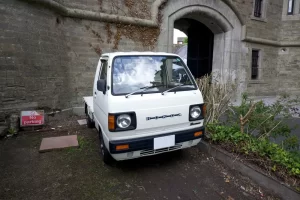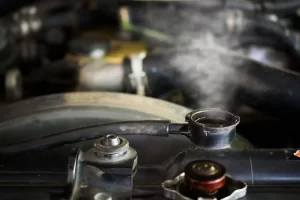DAIHATSU HIJET REVIEW: SHOULD YOU GET IT?
There are many reasons that make the Daihatsu Hijet a top choice among consumers. Classified as a microvan, the Hijet comes in many variants, including a Kei truck. Kei trucks are well-known among consumers for their fuel efficiency and easy maneuverability.The Daihatsu Hijet has been in production for well over 50 years now. The first vehicle came to the forefront in 1960, and right now, it is in its eleventh generation. Earlier vehicles featured a smaller engine, but the overall vehicle specifications have undergone many changes over the years.Over the years, the Daihatsu Hijet has adapted to the changing times and adopted favorable changes that came forth in the mini commercial vehicle market. Many adaptations to the engine, platform, and transmission have resulted in a fuel-efficient vehicle with a quiet performance at startup.The Daihatsu Hijet has remained a popular vehicle of choice across many industries. Its total production has been more than 7.5 million units. The Hijet is an integral part of the construction, agriculture, and delivery industries in rural areas and cities worldwide.The Daihatsu Hijet remains a popular contender among other vehicles for consumers looking for a sturdy car with a reasonable drive. If you are looking for comprehensive Daihatsu Hijet reviews, continue to read below as we break down its specifications in detail.
Daihatsu Hijet Overview
The Daihatsu Hijet has undergone changes in exterior dimensions and engine over time. The company introduced the first car with a 360cc two-stroke engine as the Kei truck laws mandated at that time. Over the years, the Hijet engine’s power increased to 660cc until 1990.The latest version features a 658cc gas engine. The export model of the car featured a more prominent bumper and wider body. The eleventh-generation Daihatsu started production in 2021. It featured several modifications and is available as a van or a passenger van with a front mid-engine, rear-wheel-drive, or all-wheel drive.Furthermore, it comes with a 5-speed manual CV transmission with the Daihatsu New Global Architecture (DNGA). The van length is 3,395 mm with a 1,475 width and a 1,890 height.The Daihatsu got a full model change between the seventh and eighth generations. The eight-generation Hijet emphasized more interior capacity and acceleration that started at high speeds.One of the most popular Daihatsu Hijet has been the van which remained in production from 2004 to 2021, and the truck, which has been in production to date starting from 2014. The Daihatsu Hijet Kei truck comes in a 2-door body style and a 4-door body style. As a Kei van, it comes in a 5-door body style.
Daihatsu Hijet through the Generations
The first two generations of the Daihatsu Hijet came with specific features. However, there were slight modifications in the third generation. It featured rehinging front doors and had a boxer design overall.In 1971, the company launched the fourth generation Hijet which was initially only available as a truck. It came with all-new sheet metal with an upgraded rear suspension. In 1972, the fourth-generation Hijet came out in a van version featuring sliding doors on either side along with a top-hinged tailgate.In the same generation, the regulatory bodies introduced new Kei regulations, which led to the introduction of the 550cc four-stroke Hijet with a bigger bumper. The new cars after this were slightly longer and included a new front clip.The fifth generation Hijet came out with a truck version known as the “Hijet Wide 55” and was widely exported. It features a four-stroke, more powerful engine, water-cooled two-cylinder unit, and balance axle. It featured a maximum torque of 4.0 kg. The Hijet came only in a four-speed manual transmission with a floor-mounted shifter. Three months later, the company launched a panel van version of the car as well. The same generation Hijet received a facelift in 1979, which introduced a single-piece grille in the front of the car. The interior sported a more well-designed dash and comfortable seats that could be adjusted.The sixth generation Daihatsu Hijet features a longer wheelbase with the same engine. The Vans came with flat-floor and high-roof options. Its power output was gauged at 28 PS at 5500 rpm, while the maximum torque was at 4.2 kg at 3500 rpm.In 1983, the company launched the Hijet Jumbo. It had a shorter bed with a high-roofed extended cab pickup. It featured more comfortable seats and small luggage space. The biggest change in the seventh generation Hijet was a modern three-cylinder engine.
At Minitruck Imports, We Offer A Large Selection Of Used Mini Trucks Of High Quality At Affordable Prices
The eighth generation vehicle came in two-wheel and four-wheel drive. In the same generation, fully electric vehicles were also launched in the van version. The ninth generation cars were a cross between the truck and van versions which featured a semi-cab design. Minor changes were made to the Truck version, including a new front clip and a revised interior.In the tenth generation, the Daihatsu Hijet only came in a van version, while the trucks from the previous generation continued until 2014. It underwent a redesign in 2017, which introduced a prominent trapezoidal grille.Lastly, in 2021, the eleventh generation Hijet Cargo came forth as a 5-door panel van/van. It features the Daihatsu New Global Architecture in two gas engine variants. It comes in a 5-speed CVT transmission.Let’s review all Daihatsu Hijet features separately below.
Driving Experience
Daihatsu trucks are known for their powerful driving performance depending on which vehicle you are opting for. Till 2004, the Daihatsu Hijet didn’t have a power steering, but overall, its performance on the road was quite good compared with similar vehicles.The eleventh-generation models are available in many engine variants. It comes as a Kei truck, microvan, and light commercial vehicle. Moreover, it is available as a 2-door pickup/Kei truck, 4-door Kei truck, or a 5-door Kei van/panel van.You can opt for a 658cc gas engine, 659cc gas engine, or a 998cc gas engine. The car has a 5-speed manual transmission, or you can opt for the 3 or 4-speed automatic transmission. The latest versions and the truck variant also have a continuously variable transmission.The truck and van versions of the Hijet largely share the same engine. From 2007 onwards, the vehicles shifted to a more efficient KF engine, while earlier versions featured the EF-series engine.
Cabin and Interior
The Daihatsu Hijet has reasonable cabin space and a comfortable interior. If you’re up to 6 feet, you can comfortably sit behind the wheel. Anyone taller than that can find it difficult to adjust in the front. However, two people can easily adjust without problems.The vehicle design on the interior can make some drivers feel too exposed, as the seating is quite close to the windscreen. This can especially be troublesome during motorway driving. Some short-heighted drivers can face a problem as the seats or steering wheel cannot be adjusted for reach or height. Furthermore, the pickup cab comes fitted with a radio. However, the windows are manual. You’ll find a carpeted floor, head restraints, a glovebox, a locking fuel cap, and two-speed wipers. In the Hijet van, you can get reclining seats, heated rear windows, and a rear wash-wipe.Other features in the vehicle include a radio, speedometer, heater, and fuel gauge. The materials and plastic used aren’t specifically high-quality, but it does get the job done effectively.
Ride and Handling
The Daihatsu Hijet is an easy-to-drive vehicle due to its small dimensions. You can take it out on narrow roads and turn small corners without a problem. It’s a good vehicle of choice to deal with traffic situations. Moreover, it is also easy to park in tough spots that seem unreachable with a regular car.You will like the overall handling of the Daihatsu Hijet, and it gives a smooth ride on well-laid roads. Overtaking at high speed can make the vehicle feel pushed to the side, which is something you can adjust to with time. However, the steering could be a bit better. At lower speeds, it can feel heavy, but as you speed up, it starts to feel lighter.
Exterior
The Daihatsu Hijet clearly compromises the design over functionality. It isn’t in the league of attractively designed cars; however, it is quite a practical vehicle. The exterior may not be attractive, but it is sturdy and durable.The car has a bulky appearance and gives off a boxed look. There are no striking design elements that would be visually appealing. However, the big windscreen and a thin grille help enhance the car’s overall look.The Hijet sits on small 12-inch rims, which, given its height, looks out of proportion. Moreover, it has sliding rear doors and a roof-hinged tailgate, giving easy access to the load area of the vehicle.
Safety and Security
Regarding safety protection features, many notable safety specs are missing from the standard features on the 2004 Daihatsu Hijet. The driver and passenger airbags are optional, as well as brake assist.Other safety features on the Hijet include power windows and steering, a centralized door lock, and a side impact bar. Overall, it has reasonable safety features, but there could be a lot more included as standard specifications.The newer Hijet models, however, feature improved safety features by including the latest and much evolved Smart Assist. This means that the newer vehicles are fitted with crash-avoidance braking functions.It also has an improved collision warning function. On MT models, you can find start prevention with brake control. Other new and improved safety functions include lane tracing alerts, lane departure prevention, traffic sign recognition, and adaptive driving beams.
Daihatsu Hijet Price
The Daihatsu Hijet is a utility vehicle that is practical and easy to drive. It comes in various body styles to suit specific needs. You can purchase a scissor dump to transport construction material, or you can go for a mini truck with a cargo bed to stock goods.The Daihatsu Hijet ranges between $7000 and can go up to $22,500. You can easily find a wide variety of new and used Daihatsu Hijet in the USA through Minitruck Imports.
Things to Consider
The Daihatsu Hijet is a reasonably priced Kei truck that can be used for a variety of purposes. However, you should consider some things before opting for the vehicle. If you’re going to get a petrol engine, it will have to be serviced after every 6,000 miles. Chances are, with time, you can miss the maintenance.Another thing to consider is the thin body panels on the older versions, which can become prone to rust quickly. You should pay attention to the bodywork if you are getting a used model.
Daihatsu Variants
Daihatsu was initially designed as a Kei truck specific to the Japanese market. It is most suitable to be driven on Japanese roads hence, the compact size and fuel-efficient engine of the car. However, there are other variants as well which are sold outside Japan. These are available with a 1.0 or 1.3-liter engine.However, these cars do not fulfill the Kei cars criteria as they are longer and wider. For instance, the Hijet Citivan/Maxx is derived from the Hijet available in the Japanese market. However, it later became a separate model available in different engine variants. In 2002, the 1.6-liter engine was replaced by the 1.5-liter engine model.In 2002, the Hijet Cargo Hybrid was also introduced as a hybrid electric van. It launched in Japan with a 660cc engine. It was branded as a mild hybrid design as it used an existing non-hybrid Hijet Cargo.It’s different from other hybrid designs as it features the gas and electric components as one unit. One advantage of this model is its 30% more fuel efficiency than the gas-powered counterpart.The hybrid minicars debuted as a concept minicar in 2002 but never made it to production as hybrid versions of other models were launched instead.
End Note
The Daihatsu Hijet is a promising vehicle for both individual and business use. It has undergone several changes over the years, largely due to its popularity all over the world. When choosing a Kei truck, make sure you’re making the right choice by considering your needs. Check out the extensive inventory at Mini Trucks Import to find the right vehicle.
Related Posts

WHAT IS THE GAS MILEAGE OF HONDA ACTY
WHAT IS THE GAS MILEAGE OF HONDA ACTY What Is the Gas Mileage Of Honda Acty This article will discuss

REASONS FOR MINI TRUCK OVERHEATING
REASONS FOR MINI TRUCK OVERHEATING Top Reasons Your Mini Truck May be Overheating Mini trucks are a great addition to

HOW OFTEN TO CHANGE DIESEL OIL OF MINI TRUCK
HOW OFTEN TO CHANGE DIESEL OIL OF MINI TRUCK How Often To Change Diesel Oil Of Mini Truck If you
